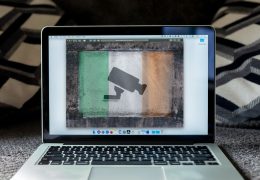Photographers’ Rights
There have been many discussions lately, both online and off, on the rights of photographers – when, where and what you can legitimately photograph, and what you can subsequently do with the photographs you take.
This pamphlet is intended to give an outline of your rights and responsibilities as a photographer, but is not intended as a comprehensive guide.
As always, if you’re looking for specific legal advice, contact your local friendly solicitor!
Photographing on Public or Private Property?
In general, you are entitled to take pictures of anything you wish, when in a public place. You may take pictures of private property, people, or anything else you fancy.
On private property, you are also generally allowed to take photographs, provided you have permission to be on the property.
However, the owner may impose conditions on your entry to the property, which may include a complete ban on photography, a ban on photography of certain things, or a ban on certain types of photography (eg, flash photography, video photography etc).
Even where permission is not explicitly needed to enter the property, the owner is entitled to demand that you cease taking photographs, or that you leave the property. If you are asked to leave a property, you should not be threatened or attacked. Reasonable force may be used to remove you if necessary, however. In general, you are better off leaving when asked – the fact that you should not be threatened, does not mean you won’t be. The owner has no right to confiscate or damage any of your equipment.
The occupier of a private property, where he is not the owner, has the same rights as the owner would have. Security guards may also act for the owner or occupier in exercising these rights.
Violating the conditions under which you were admitted to a property voids your permission to be there, and you may be guilty of trespass. Trespass is a crime in some unusual cases but damages are more commonly sought in a civil case.
Photographs in a Public Place
You are not allowed to harass people in the course of your photography – stalking someone, or repeatedly blocking their way to take a photograph of them could be construed as harassment; simply taking a photograph of them probably won’t. Taking photographs of people in public is generally allowed – however, an exception is made where the subject would have a reasonable expectation of privacy. You’re perfectly entitled to take a photograph of someone walking down the street – but hiding in a tree to take a photo of them in their home may get you into trouble.
You are not allowed to obstruct movement on the highway (roads, footpaths, cycle paths etc), or the work of a police officer, while taking photographs. Whether you are regarded as obstructing will depend on the situation, and you will generally be asked to move along by the police, if they view your behaviour as obstructive. If you refuse to do so, or persist in obstructing the highway, however, you may be arrested.
Legal Restrictions
What you can do with your photographs is limited by Irish law. You may be found in contempt of court if you publish a photograph of a defendant, where identity is in question, that is, where witnesses may be asked to identify the defendant. You may also be found in contempt of court if you publish a photograph that might prejudice the defendant by insinuating his guilt (for example, of him being brought to court in handcuffs), or a photograph that might reveal prior convictions (for example, of the defendant at a previous trial).
Your Subject’s Rights
Can the subject of a photo prevent you from publishing it? Most of the caselaw in Ireland has centred on the misuse of celebrity images to imply an endorsement of a commercial good or service. This is dealt with by the courts, in general under the normal rules covering passing off. So, if the subject’s image might be worth money if used in an advertisement or as part of a product endorsement, they have a right to protect the income flowing from that, as a property right.
But what about the rest of the world, who don’t make their fortunes by assuring the world that, as Hollywood millionaires, they choose only the finest home-bottle hair-dyes to colour their hair? As the actor Gordon Kaye found out, when he was photographed by an interviewer whilst recovering from a serious head injury in hospital, there’s not much anyone can do to prevent you from publishing your photos. Provided your photographs are genuine, even if they would bring the subject down in the eyes of society, they’re not libellous.
Up to now, the right to privacy has been largely determined by a mixture of Constitutional rights, and ECHR caselaw – the Minister for Justice has previously said that the private interactions of a person – even in a public place – may be covered by the right to privacy – for example, while doing the shopping, or meeting a friend for coffee. But, once the interactions become public – at an awards ceremony, or waving from the podium at the Olympic Games you lose that right to privacy. It may be hoped that the forthcoming Privacy Bill will clear up these issues, but for now, it is generally safe to presume that you can publish your photographs, unless your subject was in a situation where a reasonable person would believe that they’d brought their ‘portable sphere of privacy’ out with them.
In short, your subject can object to the publication of photos of them if: The photographs are untrue – they’ve been altered in some way, to show something that isn’t the case; The photographs are interfering with the subject’s commercial endorsement business; The photographs are tortiously violating the subject’s privacy.
The last option is still not entirely clear, but use common sense and remember the hypothetical “reasonable person”, and you shouldn’t go too far wrong.
Ownership of Photographs?
If A takes a photograph of B, who owns the copyright in that photograph? As a general rule, the photographer owns the copyright. This is true even if B has commissioned and paid for the photograph – as in the case of wedding photographs. If B wishes to enjoy the copyright, he must agree with A that the copyright will be transferred to him. B should make sure that the agreement and any transfer are in writing – or they may be ineffective under Irish law to transfer the copyright.
The main exception to this principle is where photographs are taken by an employee in the course of their employment – if X Ltd. employs Z as a photographer, then the photos taken by Z in the course of his work belong to X Ltd. and cannot be used by Z without their permission. This can trip up the unwary – for example, Z may be in difficulties if he wishes to use those photos as part of a portfolio of work.


